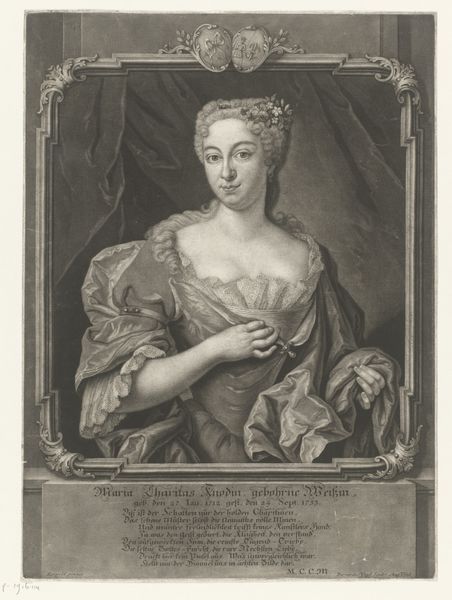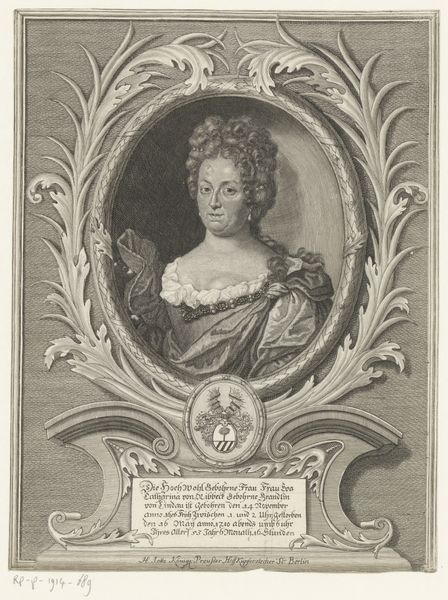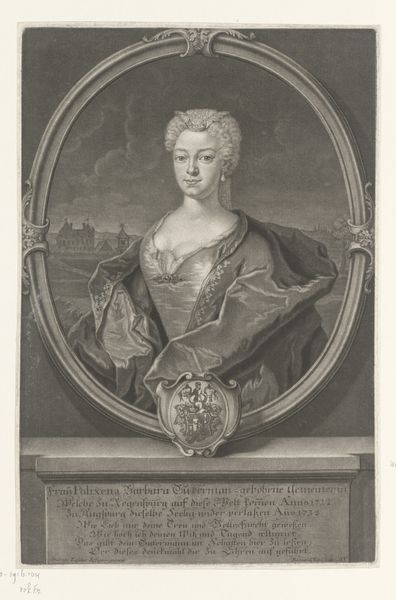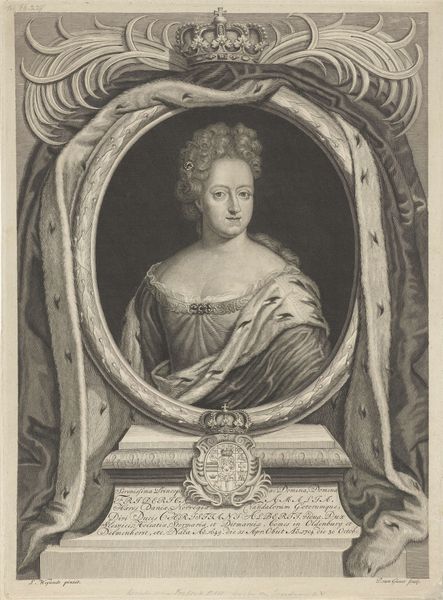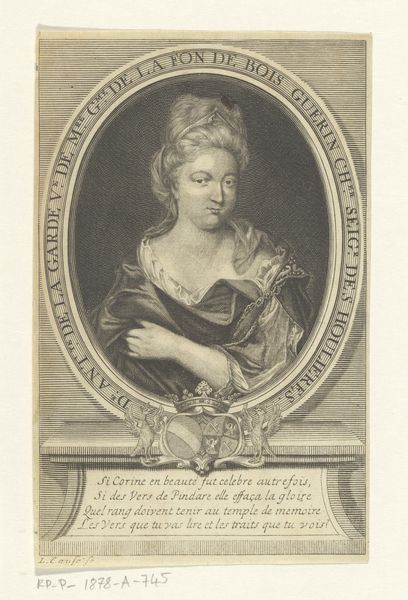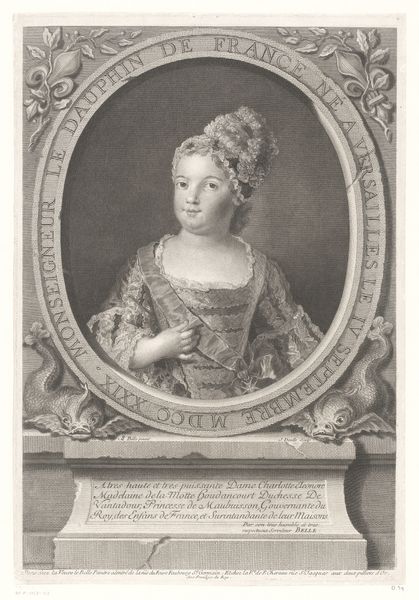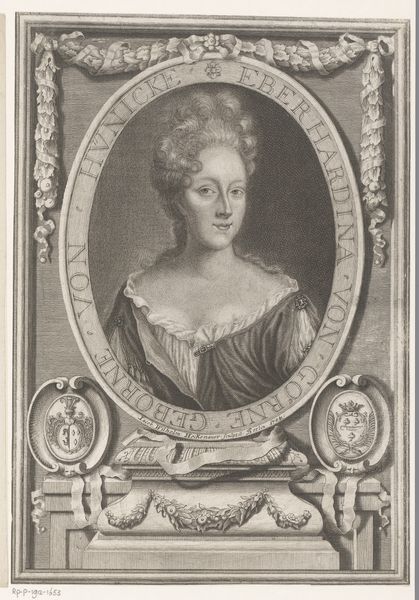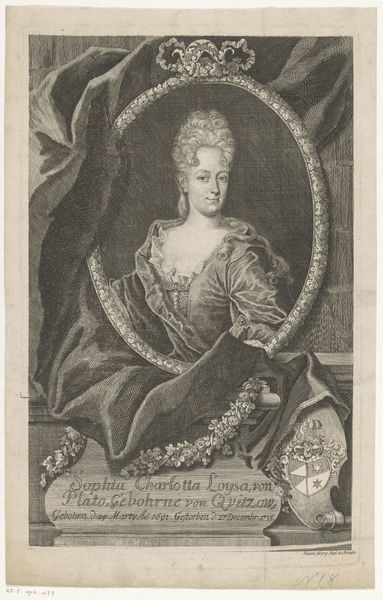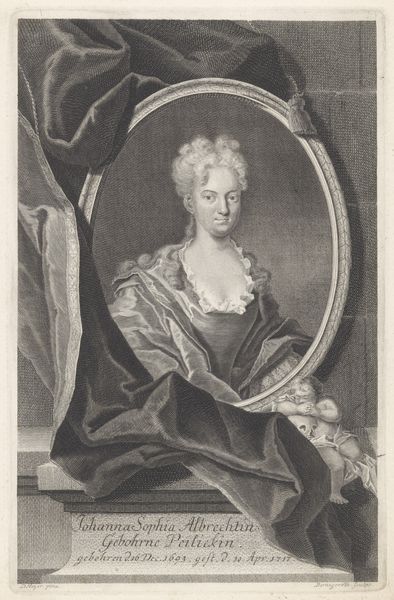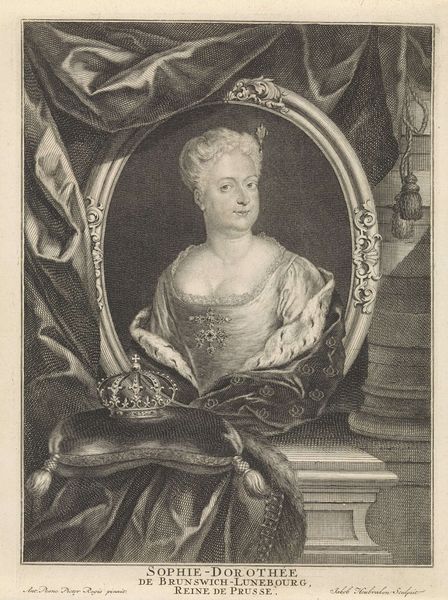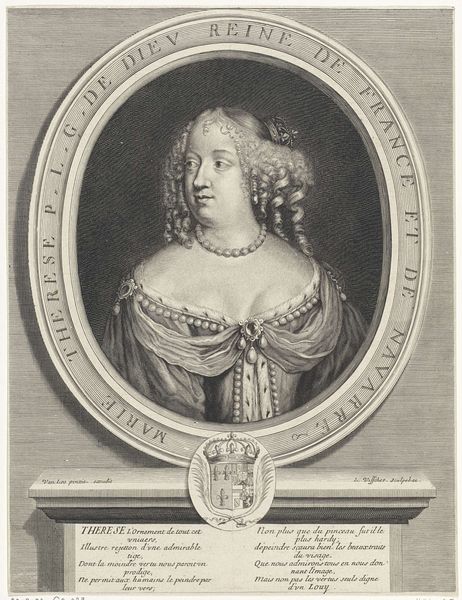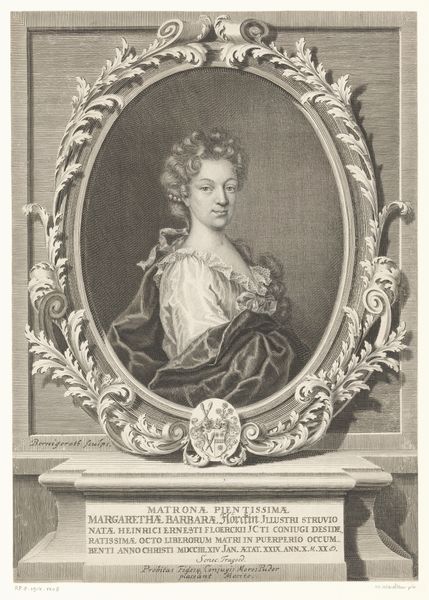
engraving
#
portrait
#
baroque
#
charcoal drawing
#
historical photography
#
history-painting
#
engraving
Dimensions: height 323 mm, width 236 mm
Copyright: Rijks Museum: Open Domain
Editor: We're looking at "Portret van Friderica Margareta von Stade," created between 1702 and 1737 by Bernhard Vogel. It’s an engraving. The details in the rendering are incredible, almost photographic. It feels formal and imposing. How do you approach a piece like this? Curator: Primarily, I examine the formal elements. Consider the oval frame. Its symmetry and contained space emphasizes the subject's idealized form. Note the interplay of light and shadow, achieved through meticulous engraving techniques. The varying densities of lines create depth and volume, particularly in the rendering of her elaborate hairstyle and the folds of her garment. Do you observe how this use of chiaroscuro guides the viewer's eye? Editor: Yes, it leads right to her face, and then down towards the text and ornamentation on the pedestal. It creates a visual hierarchy, but also divides the image into distinct zones. Curator: Precisely. We can delve into the semiotics of the adornments. The crown-like crest, the twin vases billowing stylized smoke. These motifs operate as signifiers of status, authority, and perhaps even memory. Vogel has deliberately constructed an image designed to project and preserve an idealized version of Friderica Margareta von Stade. Consider too, the texture –the contrast of smooth skin and patterned fabrics – it creates visual interest, no? Editor: It does. So, looking at it this way, it is about more than just representing her likeness, it’s constructing a message, through artistic choices. Curator: Exactly! And by understanding these formal strategies, we can begin to understand the portrait's deeper function as a carefully crafted statement. Editor: That’s fascinating. I never considered that. Curator: Every line, every shadow, every decorative element contributes to the portrait's overall meaning and impact.
Comments
No comments
Be the first to comment and join the conversation on the ultimate creative platform.
